So I know what you’re thinking: Seriously, Leigh? Sleeping Beauty is feminist? The classic Disney film made in 1959, i.e. in possibly the least feminist-friendly decade of the entire twentieth century? The quintessential Disney Princess Movie? The one where the titular character is basically a Barbie doll knockoff who does nothing the whole film but sing wistfully about Finding Her Man, before becoming the ultimate passive Damsel in Distress, and other than that has maybe ten actual lines of dialogue? That Sleeping Beauty?
To which I say: Yep, that’s the one.
First, I have to say up front that Sleeping Beauty, regardless of its feminism or lack thereof, is probably one of my favorite Disney movies of all time, if not the favorite. Part of this is pure nostalgia, no doubt—Sleeping Beauty was one of the few movies we had on tape back in the dawn of the VCR era (yes, I’m old, shut up), and my sisters and I therefore watched it approximately seventy billion times purely for lack of many other options. So that’s probably part of it.
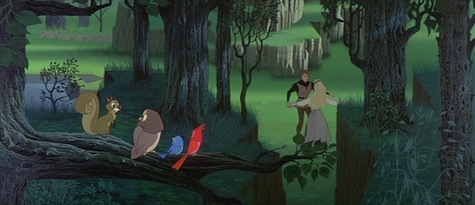
But also, I think, I loved (and still love) Sleeping Beauty because I think it is possibly one of the most artistically impressive and utterly gorgeous animated films ever made, because it was so incredibly aesthetically in harmony with itself and with its subject matter. The wonderfully detailed and stylized animation, drawing its inspiration from medieval art, worked perfectly with the fairytale setting, and the choice to adapt Tchaikovsky’s beautiful score for his ballet of Sleeping Beauty was frankly pure genius, in my opinion. Far from being lazy or derivative, these choices reinforced the archetypal nature of the fairytale—allowing the film to make homage to the story’s earlier iterations while still being something entirely unique on its own. (This documentary, while charmingly dated, gives a pretty good picture of what I am talking about.)
But that is a tangent! We were talking about why I think Sleeping Beauty is also an inexplicably feminist film. Because you are right: Sleeping Beauty herself is barely more than a cipher. Princess Aurora has virtually no character at all in the film other than to be an ideal—and, I might add, an ideal only achieved with the magical fairytale equivalent of surgical enhancement. (Yeah, “gift of beauty” and “gift of song”—awesomely cheaty way of getting skipped ahead in line, there, honey. Also awesome that no one thought maybe a cooler thing to give her would be, I dunno, the “gift of intelligence” or “gift of hand-eye coordination,” or whatever, ain’t it.) Aurora in the film is not a person, per se; she is the prize that the other characters fight over. She is an object, really, and that is not feminist at all.
But, despite that, consider: who is the protagonist of Sleeping Beauty?
It’s not Aurora, that’s for sure, for all the reasons I just stated. She never grows as a character during the course of the film; she has no agency at all, in fact. She doesn’t act; she is acted upon. So she is definitely not the hero of the story.
And perhaps the next obvious answer, then, is to suppose it is Prince Philip. Philip, after all, does definitely act in the film, what with killing the dragon and rescuing the maiden and all, and he has at least a little more character to his character than Aurora does, even if it’s mostly in the form of his Odd Couple relationship with his horse. He rescues Aurora and wins her hand, right? Does heroic deeds, kills the bad guy girl, and gets the girl, right? So that must make him the hero, right?
Well, yeah… except that actually, Philip himself doesn’t do any of those things. Or, he does, technically, but he would never in a million years have been able to do any of the heroic things he does in the film if it weren’t for the fact that he was first rescued by, facilitated by, and actually aimed at the villain of the piece by the actual heroes of Sleeping Beauty: the Three Good Fairies.
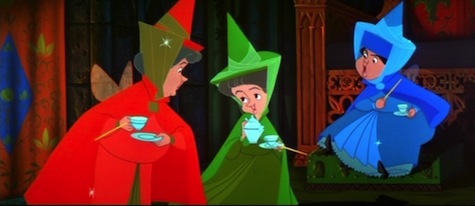
That’s right: the protagonists, the heroes, the main characters of Sleeping Beauty are not a dashing prince or a beautiful princess, but three elderly, frumpy, ditzy women, with ridiculous tiny wings and wands that scatter sparkles everywhere, who can’t bake a cake or sew a dress worth a damn (without cheating, anyway), but when it comes down to brass tacks, are more than capable to the task of saving Aurora, Philip, and the entire damn kingdom from a fearsome foe.
Think about it: it is Flora, Fauna, and Merryweather who make all the critical decisions in the film, the ones which drive the action. They are the ones who act with agency, to counteract their antagonist/enemy, Maleficent—who, it must be noted, is also female, and also the only other character in the film whose decisions and actions drive the plot.
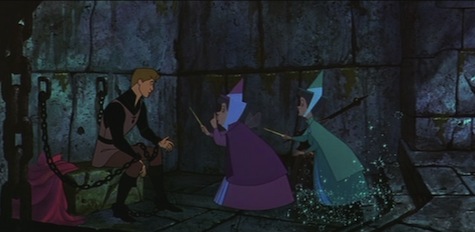
The Good Fairies are the ones who concoct the plan to hide Aurora and attempt to avert the curse placed upon her, and they are the ones who, when their plan goes awry, act to preserve the kingdom, rescue Prince Philip from Maleficent’s clutches, guide him to the castle, and give him the necessary magical augmentation to kill Maleficent at the end. Let’s be real: Philip would have been toast ten times over on that rescue mission, had he not had the three fairies basically babysitting him every step of the way. His victory over Maleficent is not his victory at all, in my opinion; it is Flora, Fauna, and Merryweather’s.
Which is awesome.
The central conflict in Sleeping Beauty is not the romance between Aurora and Philip, therefore, or even the conflict between Maleficent and Aurora’s parents. Instead, the conflict is the Good Fairies’ battle with Maleficent, in which Aurora, Philip, and all the other characters are merely pawns. Not to mention, the Good Fairies are just about the only characters in the film who grow as people in the course of the story, who are different at the end of the story than they are at the beginning, and who the audience identifies with and roots for as people, rather than the stereotypical idealized nonentities Aurora and Philip are, who we are trained to root for by default.
Which means, in sum, that all the truly central, important and relatable characters in the entire film are female. Which, I hope I don’t need to point out, is something that hardly ever happens outside of rom-com “chick flicks.” And certainly within the Disney oeuvre itself, it is most definitely still the exception rather than the rule (though recent films like Frozen are happily making way to bucking that trend).
Which is what I mean when I say that Sleeping Beauty is accidentally the most feminist Disney film. Because making something “feminist” doesn’t necessarily mean making a film where there is a “strong” female character (which is great, but too often ends up meaning that she is essentially a male character with boobs), but making a story where the female characters matter—who are the ones we identify with and who drive the story, instead of being driven by it. And, ideally, where there are multiple female characters who matter, not just one token girl.
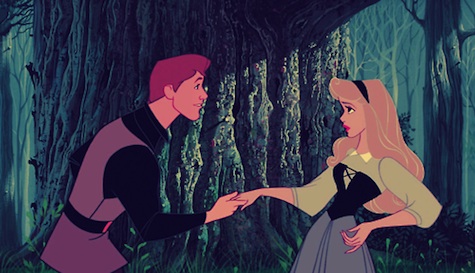
Aurora’s cipher-ness in Sleeping Beauty would be infuriating if she were the only female character in it, but the presence of the Fairies and Maleficent allow her to be what she is without it being a subconscious statement on what all women are. Because there are weak, damsel-like women out there; it’s just that far too often they are the only women we ever get to see, and that is where the problem lies. The problem is that the fundamental lack of multiple female characters in movies means that the one or two female characters who do appear have to stand in for all women, which just isn’t fair.
Mulan, for instance, is a great movie that does some lovely meditations on being a woman in a man’s world, but it still fails the Bechdel Test in that Mulan is the only female character in it who matters. Mulan is still an anomaly, an exception, an oddity in her world. Which is okay as far as it goes, but what’s awesome about Sleeping Beauty is that the Good Fairies are not exceptions or oddities (at least not in the sense that they are female), but simply who they are: heroes who happen to be women. It gives the movie a balance that is generally just missing from movies (Disney or otherwise).
Which, again, is awesome. Not least for how utterly rare it is—even now, more than fifty years later.
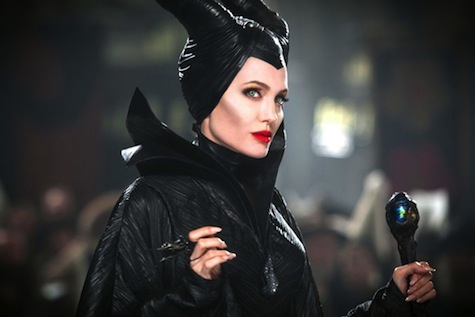
Which brings us to Maleficent, which I saw in the theater a few months ago, and which is what triggered this whole school of thought on my part that is culminating in the post which you are hopefully still reading right now. Because Maleficent, besides being a very good movie that you absolutely should see if you haven’t already, was absolute proof (In My Arrogant Opinion, Of Course) that my contention that Sleeping Beauty is Disney’s most feminist movie is totally correct.
I don’t want to talk too much about the movie for fear of spoiling it, because there are definitely a few plot twists that you don’t want to be forewarned about if you haven’t seen it yet, but the proof I speak of can be basically summed up thusly: Maleficent not only by necessity continues its predecessor’s delightful (if, as I suspect, largely accidental) focus on the female characters of the story (because the female characters are pretty much the only characters worth focusing on), but it actually fails a reverse Bechdel Test. In other words, at no point in the movie do two male characters have a conversation that is not about a woman.
And I suspect I could probably count on one hand the number of Hollywood movies made in the last hundred years for which that is true. (And if I’m wrong, please do tell me about them!)
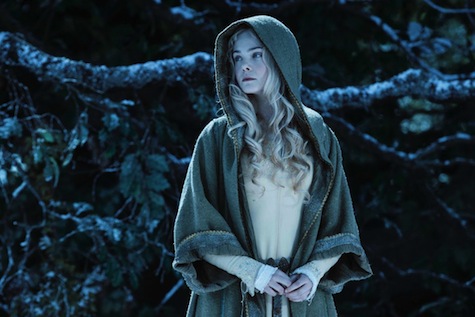
And as if that weren’t enough, Maleficent also redeems the character of Aurora, taking her from the vacant cipher she was in Sleeping Beauty and making her a character of actual depth and agency, whose decisions and actions have a major impact on the story. Granted, it does this rather at the expense of the characters of the Good Fairies, who are ironically reduced to caricatures of themselves, but in a way that is fitting, for this time around it is Maleficent who is the protagonist of the story, and it is her antagonists who are made into one-dimensional (sort-of) villains, just as Maleficent herself was in Sleeping Beauty. (I love Maleficent in the original Disney classic, don’t get me wrong, but there is no doubt that her motivation for being evil in it was presented as, essentially, “because she’s evil.” Which is… not particularly deep, as these things go.)
I love this for many reasons, but not least for my ironic glee at the fact that Maleficent is basically Disney’s fanfiction AU (Alternate Universe) of its own classic film. And it is an AU in the best of ways, being at once both a tribute to, and a clear-eyed modern commentary on, the source material, most particularly on some of the more problematic tropes that the original was prey to (my favorite being the calling-out of the Dude, She’s Like in a Coma trope).
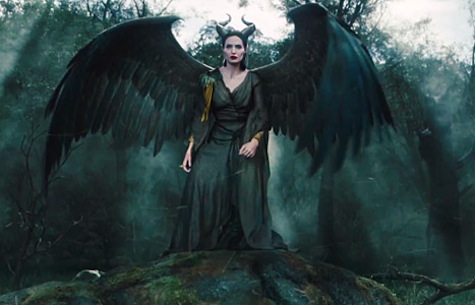
And again, though I suppose Maleficent could be viewed as yet another example of Hollywood Running Out of Ideas, in my personal opinion it is much more fairly viewed as a continuation of the inspiration to use Tchaikovsky’s music for the 1959 version. These stories are told over and over again for a reason, and Maleficent’s reinterpretation of this story is, in my opinion, pretty darn brilliant. And, incidentally, excellent proof that a female-dominated story can be just as good and compelling and awesome (and universally applicable to the human condition) as any other story out there.
So, in conclusion, you should absolutely take some time out to watch both the original Sleeping Beauty, and the modern AU version of it in Maleficent, and maybe take some time to reflect on how awesome they both are, and why we still need more movies like them. Happy watching!
Leigh Butler is a writer, blogger, and rampant opinionator for Tor.com. She is currently conducting the Wheel of Time Reread Redux and A Read of Ice and Fire on the site, and is absolutely convinced that she walked with you once upon a dream, though she declines to speculate on whether alcohol was involved. Whee!










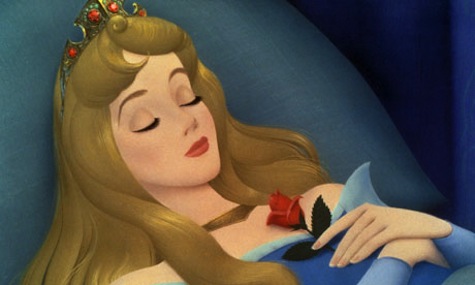
Oooh, I love this :) I haven’t actually seen Maleficent, so I can’t comment, but I am coming from the same place – Sleeping Beauty was one of my very favorites growing up and still is. Aesthetically and musically it is just SO good. I loved the fairies too. (And come on, you know that Merriweather totally would have given her the gift of intelligence if she hadn’t had to reverse the curse).
I think in one sense Aurora does get a tiny bit of agency or at least an interesting personality in that when she learns she’s really a princess and betrothed to the prince, she doesn’t think this is a sparkly yay thing. She wants to stay in the glen and meet up with some (she thinks) normal guy (not that that in and of itself is the smartest idea but I tend to accept the conceit that in movies falling in love just happens faster). In the end she goes with the fairies so maybe it’s not really ‘agency’ but at least it shows she has her own opinions on things.
Anyway, I enjoy thinking about some of the problematic issues in Disney movies, but I also enjoy still being able to enjoy the positive things in them and acknowledge that exposing my children to them isn’t going to be automatically toxic.
I love your definition of a feminist film/media not necessarily being about ‘strong’ female characters but about real, relatable developed characters who have their own motivations, dreams, decisions, etc. I think sometimes people make the mistake of assuming feminist equals strong, and furthermore, that strong means a very physical, aggressive or even violent kind of strength, or, if not physically strong, at least a very sassy type of character (which, if done wrong, just comes off as obnoxious and unpleasant that you probably wouldn’t want to be around in real life). And I enjoy those characters, just not all the time.
I’d also add that, although much has been made of the fact that Aurora doesn’t speak for the last 20 minutes or so of the film, fewer people seem to notice that Phillip doesn’t, either. From the time that Maleficent captures him through the time that he escapes, cuts through the brambles, and fights Dragon!Maleficent–all with the fairies guiding and helping him every step of the way–and then awakens Aurora, and finally marries her, he never utters a single word. Which indicates to me that this was a deliberate choice on the writers’ part. Aurora and Phillip were both always red herrings. The real stars of the story are the fairies.
I’d also say that the Disney films don’t handle “Dude, She’s Like in a Coma” nearly as badly as people say they do. At least, in context, in both cases–Snow White and Sleeping Beauty–the Prince and Princess had already met and fallen in love beforehand. That’s not to say that it isn’t at all problematic. It’s certainly more problematic in Snow White, when their sole interaction involved the Prince surprising her near the well, and then her running off. But at least in Sleeping Beauty, the two met, danced, had a love-at-first-sight thing, and had even set up a second date, so it’s not as if he stumbled upon a total stranger and kissed her as in the original fairy tale.
“And, incidentally, excellent proof that a female-dominated story can be
just as good and compelling and awesome (and universally applicable to
the human condition) as any other story out there.”
Cinderella?
A person raised in an abusive household getting the heck out of there and never looking back.
(Sure, she had help from the mice and her fairy Godmother; but the mice helped her by fixing up the dress she repaired (it was her mother’s dress, so it must have been rather old) when she lacked the time to do so becasue she was doing an insane amount of work/chores specifically chosen to be a sisyphisean task. (What, is she supposed to do the impossible and slow down time?) and the fairy Godmother helped her after said dress was unfairly ruined through no action of Cinderella’s own. What, is she supposed to make a dress and somehow get to the ball in defiance of actual time? It seems unfair to blame Cinderella for not being able to do the impossible.)
(Okay, I will say that the whole “being locked in that room” thing was a thing where she was totally the object and not the verb; and was the damsel in distress to be rescued.
But the main victory over the villain of the movie? That point where Lady Tremaine causes the glass slipper to be broken and all seems lost; but then Cinderella is all like, “I gots the other slipper, yo” and Lady Tremaine makes one of the most satisfying faces in fiction? That’s totally Cinderella’s moment, there.
It’s not about the prince; he doesn’t save the day. He doesn’t get the satisfying “awww, yeah!” moment where the villain is defeated. Cinderella does.
(Yeah, “gift of beauty” and “gift of song”—awesomely cheaty way of getting skipped ahead in line, there, honey. Also awesome that no one thought maybe a cooler thing to give her would be, I dunno, the “gift of intelligence” or “gift of hand-eye coordination,” or whatever, ain’t it.)
Oh no, you’ve stumbled onto the premise of my secret animated movie pitch, “Princess Deadeye”
@3, LOVE your commentary. I am still having trouble whiting things out correctly, but this isn’t really a spoiler for people who didn’t read your white text. I’d just ask: is there something symbolic and important going on with Cinderella’s final rejection of Lucifer as irredeemable and her willingness to let Bruno go for him?
Also worth keeping in mind re: Sleeping Beauty, that Aurora-as-cipher was a matter of significant debate at Disney. There was a substantial contingent that wanted to show her visibly but futilely struggling against Maleficent’s spell drawing her towards the spindle. That said, is it possible that the disempowered version better extends the state of catatonic grief (it’s a lot stronger than just “not sparkly yay”) that overcomes her when she realizes she is a princess? She is suggestible because her identity has been shaken and she hasn’t recovered yet?
Love Sleeping Beauty, and said much the same thing you did in the thread criticizing Disney’s approach to women through fairy tales in general emphasizing the role of the fairies.
Greatly dislike Maleficent because it was clear half-way through the movie the message was, “Watch us do a movie where the men are evil or idiots and only the women matter, yay!” Which holds no interest for me.
@mutantalbinocrocodile: I never thought of that, but I like it!
It goes well with the scene where she comes down the stairs in her mother’s mouse-spiffied dress; and she asks them if they like it and if it will do. She looked so happy to be going out to do something fun with them.
Yeah, I guess her rejection of Lucifer completes that scene. (I always thought of Lucifer as the fourth Tremaine.)
Interesting post and comments! I need a rewatch!
I saw Cinderella for the first time when I was twenty-five and noticed her snarky remarks, lol.
I know dialogue is plot focused . . . but how many people have really listened to women’s conversation? As teens, my best friend and I discussed guys about 20%-40% of the time, depending on what was going on, and school/family/interests the rest of the time. Now, thirtysomething years later, the guys conversation % has dropped to five or less (she’s married and I’m in the “guys totally–marriage too risky–don’t want to end up in bad or w/ broken relationships like my cousins” phase) and the rest is the same as whenn we were teenagers, w/ work substituted for school.
Even in a rom com it seems like there’d be room for conversation on that other stuff.
Heck, the “kissing a comatose woman” schlock in most modern variations of Sleeping Beauty is mild compared to the ancient/original versions of the tales. Take, for instance, this Italian gem in which a king rapes Beauty, though she doesn’t wake up until nine months later after giving birth to twins. It gets worse from there—did I mention cannibalism?—but in the end they all live happily ever after. Because of course. http://www.pitt.edu/~dash/type0410.html#basile
How feminist is it if they had to act thru a man to get it done?
Hah, I love your Cinderella example. That’s actually another unfairly maligned movie, in my opinion. Cinderella isn’t really passive, at least within the bounds of her circumstance. She doesn’t completely get out of her predicament on her own, but she did act, and when my toddler son started watching it, I also had a few, “I didn’t remember Cinderella being that snarky!” moments.
But at any rate, I can also envision that she WOULD have managed to find her own way even without the prince.
I came across this same idea in tumblr several months ago, and I am so glad that you made a write-up on it. The good fairies are definitely the stars of the story – it essentially starts and ends with them (except that extra bit at the beginning where the narrator tells us about the celebration of the princess’ birth). They take care of Aurora after she is cursed, and they are as determined as Philip in trying to get her back and saving her from the curse. That said, Prince Philip was still one of my favorite princess, mainly for his swash-buckling heroics! :)
I disagree slightly about the new Maleficient film. Maybe it’s because I had such high expectations for it that I essentially came off slightly disappointed. I enjoyed seeing the film, and I liked the idea of focusing on the villain as the main character. However, I felt Aurora was almost as dull in the new film as in the old (in fact, I liked the old Aurora, because you got the feeling that she was quite snarky under those porcelain doll looks). And I felt that the hype placed on Maleficient herself couldn’t hide the fact that all the other females in the story were quite underdeveloped (Aurora and the queen) or simple targets of humor (the three Fairies).
@7, after she has initially insisted to Bruno that the only possible solution for him is “learn to like cats”?
Splendid post!
Several of your points are what I’ve been pondering in the last few days as well, since watching the BBC series, The Honorable Woman. All the most significant figures are women. They discuss a great deal that isn’t about men, and when they discuss men, mostly, it’s about something other than love. There’s even an affair in the series, which is part of a very long p0litical intrigue play of which only one of the key figures is aware is in play.
Though there are terrific male roles too — notably Stephen Rea’s, and he’s the second best thing in the series after all these women — it’s all these women in roles that in another series would probably be male that are the best thing about it. Which your discussion of the three good fairies reminds me.
Love, C.
@1 —
Agree! Sorry to have c&p all that merely to say I agree, but what you state here is very important — that feminist is not necessarily, and maybe not all the often even, being big, bad and powerful.
Love, C.
I must say, very compelling argument. I always assumed Beauty and the Beast was up there on the list of feminist Disney movies.
@3: That’s actually my favorite part of Cinderella, seeing Lady Tremaine’s shock-face. Actually, that whole climax of the movie until the end is very satisfying, I think because all the plot lines just converge so quickly.
And I suspect I could probably count on one hand the number of Hollywood movies made in the last hundred years for which that is true. (And if I’m wrong, please do tell me about them!)
I’m sure the number of films failing the reverse-Bechdel test would be rather larger than that, though that’s mostly because there have been so very many Hollywood movies made (typically around 200 a year now, and it was actually higher back in the 1930s and 1940s).
There are about 50 possible films (almost all from the last 20 years or so) listed here, though some are not Hollywood (e.g., Spirited Away, Princess Mononoke) and one or two in the main list, as the comments point out, actually pass the reverse test, albeit barely.
(Some other possibilities not on that page: The Devil Wears Prada; The Descent; Juno; The Joy Luck Club)
Of course, the real point is that the fraction of movies which fail the reverse test is much, much smaller than the fraction which fail the original test…
I actually read a book a few years ago about how the animators made the decision to make the fairies the main characters. They thought that there was more room for exploration (and also humor). It was their decision, not an accident, that placed the three fairies in such high roles. A lot of people ignore what you came to know on your own just because of the title of the movie.
@16 – I love Beauty and the Beast, partially because it contains a bookish, brunette heroine but I think the opposite is true – it’s tended to be seen as one of the worst offenders in terms of ‘feminism in Disney Movies’ (at least the recent ones) because of the way the Beast’s violent anger is such a prominent part of his personality and the implication that Belle can ‘fix’ him. It has some unfortunate implications that can lead to tragedy in real life.
I don’t think it’s intentional, and I think we are supposed to accept that Beast is the one who wants to change and takes accountability for his own actions, but there are parts that make me a bit uncomfortable when I watch it now. I think part of it is that human development – be it falling in love, self improvement, whatever – always seems to take place on a very compressed timeline in movies.
I still enjoy the movie in general but from a certain point of view…it’s troubling.
Sleeping Beauty is still the best artistically, and I’m glad to see that old documentary again. Thanks. I remember the first Los Angeles Film Festival (1981?) was held at Grauman’s Chinese Theatre. Uncle Walt pulled the original 70mm stereo widescreen print from the vault and let them show it again. We were lined up around the block — hippies all (or nearly all) and nary a child to be seen. Cheering the Prince, booing Maleficent. What a memory. Thanks, Leigh for reminding us.
@20, the compressed timeline is a bit of a messy artifact of the film’s contentious production schedule (not incidentally, itself on a real-world compressed timeline!) It was supposed to be a lot clearer that the film spans months, but cutting the original version of “Human Again”, because it supposedly took too much attention away from the main characters, ironically undercut the relationship, because the original lyrics made it crystal clear that the timeline was a lot less compressed than it looks in the finished film, where if you’re not careful you could mistake it for a few days. There are still tells in the backgrounds–the weather visibly changes from fall leaves in the opening, to full snow and back to a spring rainstorm. But most viewers aren’t paying that level of attention to backgrounds.
This article is irrevelant, the use of the definition of what “Feminism” really is, is being used incorrectly.
Love this article! SB is my favorite animated Disney film too, for all the reasons you said above :). My own thoughts on the film, particularly the fairylore, are here – http://www.brittanywarman.com/?p=1885
@21 I’m pretty sure Uncle Walt was dead in 1981. He never saw Disney World completed and that was in 1971
Yolanda Martinez @@@@@ 23:
That’s quite a statement. There has obviously always been some contention in the field as to what “feminism” is, some of it legitimate, some not so much. I would be curious to see you expand on why you think my interpretation here in particular is “irrelevant”. In what way have I used the term incorrectly?
So glad I stumbled upon your essay.
i’m surprised no one has pointed this out yet, but Mulan actually passes the Bechdel Test. As did Mulan II. One of the (several) reasons why it isn’t actually a particularly good test for a work’s treatment of women is that the relative signifigance of the female characters is utterly irrelevant to the test.
Otherwise, interesting article. Not sure i agree that Disney’s Sleeping Beauty is at all feminist, but some good points.
Because making something “feminist” doesn’t necessarily mean making a film where there is a “strong” female character (which is great, but too often ends up meaning that she is essentially a male character with boobs)
THIS.
Also, I wonder how relivent it is that Malificent and Lady Tremane are voiced by the same actress?
Hey! I just stumbled on this post. I also wrote something similar back in June of 2014. We used a few of the same pieces of evidence, but there isn’t actually that much overlap, which I found surprising (who knew Sleeping Beauty had so much secret feminist history that it would take two wholly independent blog posts to suss it out?).
Here is my post: https://lordofthefails.com/2014/06/28/a-slightly-more-feminist-reading-of-sleeping-beauty-1959/
quite interesting, never thought of this…
I think the Maleficent movie was a brilliant idea. I also like your take on the animated sleeping beauty. Way to look deeper than most. It would be great if parents were able to share this with their kids after they watch the movie so kids learn to look deeper at what they are seeing…..and parents too. I recently thought of this as an archetype story. I am sure the first idea below is not my idea and I know the second one isn’t. One may also look at this story as a single person’s journey, whether male or female, of integrating their masculine and feminine selves. If you are a male, you may look at it as Aurora is your feminine emotional half which is put in a coma during adolescence by life. As you grow up this part of you is now missing and you may find out in order to be a whole person you need to fight your own dragons inside and out to rescue your feminine side so you can truly integrate and love yourself. But wait there is more… If you’re female, it may be showing you (or your parents) nobody can save your innocence from life and after being shocked by this it is up to you to use your masculine self to battler your own dragons and bring your self out of a coma. Neither version has to do with anyone external per se, but maybe just guidance for life, teaching self rescue (with maybe some help), self integration, and self love. The real heroes of life look back at us from the mirror.